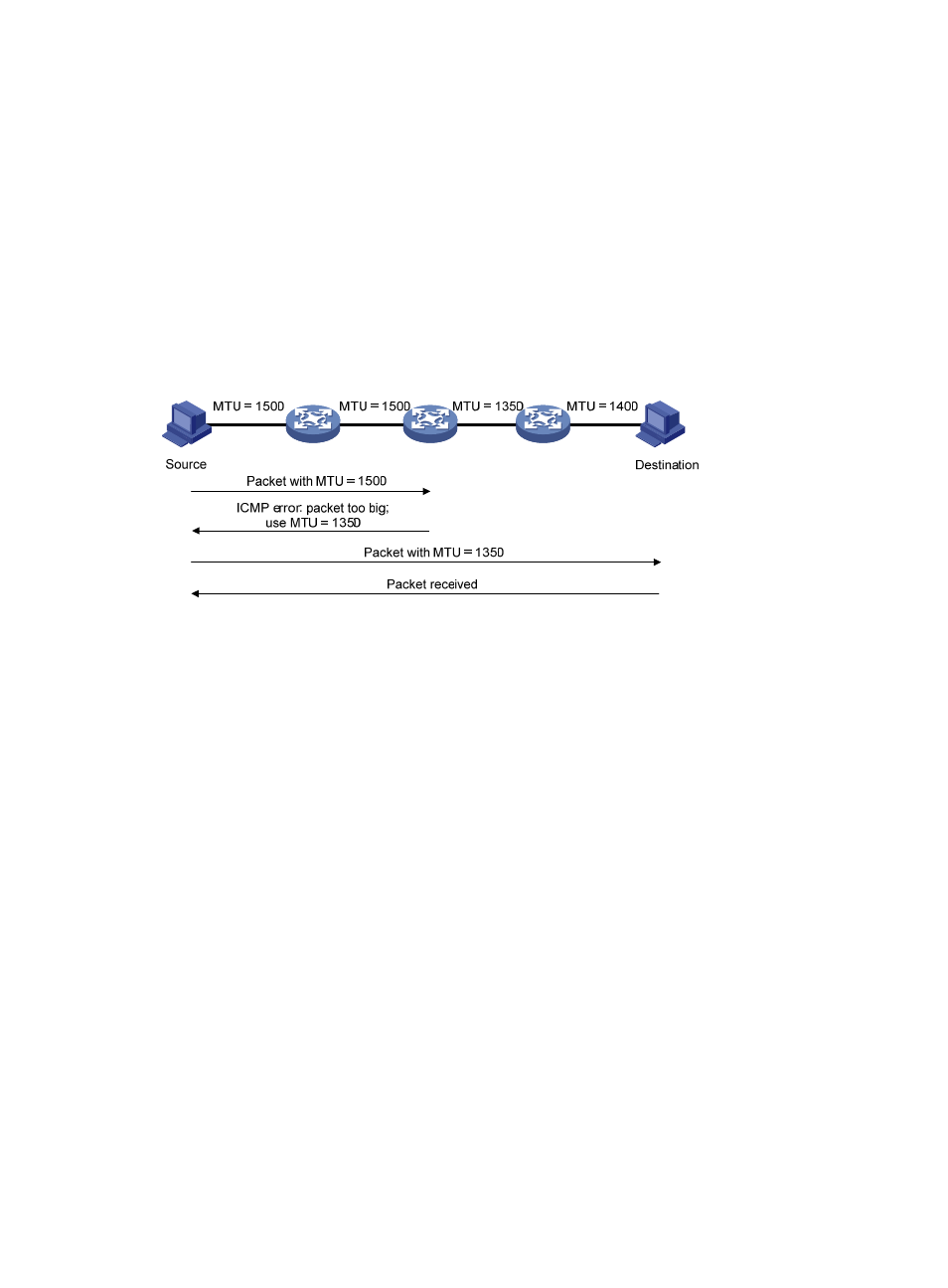Ipv6 pmtu discovery, Ipv6 transition technologies, Dual stack – H3C Technologies H3C S10500 Series Switches User Manual
Page 118

107
•
The selected route itself is not created or modified by an ICMPv6 Redirect message.
•
The selected route is not the default route.
•
The IPv6 packet to be forwarded does not contain any routing header.
IPv6 PMTU discovery
The links that a packet passes from a source to a destination may have different MTUs. In IPv6, when the
packet size exceeds the path MTU (PMTU) of a link, the packet is fragmented at the source end of the link
to reduce the processing pressure on intermediate devices and to use network resources effectively.
The PMTU discovery mechanism is designed to find the minimum MTU of all links in the path between a
shows how a source host discovers the PMTU to a destination host.
Figure 48 PMTU discovery process
1.
The source host compares its MTU with the packet to be sent, performs necessary fragmentation,
and sends the resulting packet to the destination host.
2.
If the MTU supported by a forwarding interface is smaller than the packet, the device discards the
packet and returns an ICMPv6 error packet containing the interface MTU to the source host.
3.
After receiving the ICMPv6 error packet, the source host uses the returned MTU to limit the packet
size, performs fragmentation, and sends the resulting packet to the destination host.
4.
Step 2 and step 3 are repeated until the destination host receives the packet. In this way, the
source host decides the minimum MTU of all links in the path to the destination host.
IPv6 transition technologies
Before IPv6 dominates the Internet, high-efficient and seamless IPv6 transition technologies are needed
to enable communication between IPv4 and IPv6 networks. Several IPv6 transition technologies can be
used in different environments and periods, such as dual stack (RFC 2893) and tunneling (RFC 2893).
Dual stack
Dual stack is the most direct transition approach. A network node that supports both IPv4 and IPv6 is a
dual stack node. A dual stack node configured with an IPv4 address and an IPv6 address can forward
both IPv4 and IPv6 packets. For an upper layer application that supports both IPv4 and IPv6, either TCP
or UDP can be selected at the transport layer, whereas the IPv6 stack is preferred at the network layer.
Dual stack is suitable for communication between IPv4 nodes or between IPv6 nodes. It is the basis of all
transition technologies. However, it does not solve the IPv4 address depletion issue because each dual
stack node must have a globally unique IP address.
